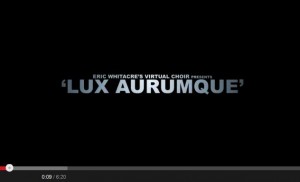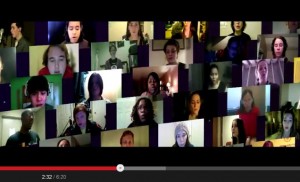Music
 Trudel | MacPherson has listened to complaints about disappearing audiences for classical music and we suggest learning from the amazing work of our favorite crowd-sourcing pioneer, Eric Whitacre. Already the most popular choral composer working today, Whitacre has pushed the classical music envelope by inviting thousands of choristers from all over the world to join his virtual choir – splicing individually recorded parts into one video. Check out the results out on one of YouTube’s most popular posts http://www.youtube.com/watch?v=D7o7BrlbaDs
Trudel | MacPherson has listened to complaints about disappearing audiences for classical music and we suggest learning from the amazing work of our favorite crowd-sourcing pioneer, Eric Whitacre. Already the most popular choral composer working today, Whitacre has pushed the classical music envelope by inviting thousands of choristers from all over the world to join his virtual choir – splicing individually recorded parts into one video. Check out the results out on one of YouTube’s most popular posts http://www.youtube.com/watch?v=D7o7BrlbaDs
 Whitacre has inspired millions via his new approaches to audience engagement, making audiences participants in the creative process. We’re studying the key aspects of effective crowdsourcing and suggest an approach that engages by making the engagement matter. Our new crowdsourcing framework – Making It Matter—focuses on three basic rules:
Whitacre has inspired millions via his new approaches to audience engagement, making audiences participants in the creative process. We’re studying the key aspects of effective crowdsourcing and suggest an approach that engages by making the engagement matter. Our new crowdsourcing framework – Making It Matter—focuses on three basic rules:
-
Make it Matter
-
Make it Easy
-
Make it Fun
We suggest encouraging visitors to an organization’s website to help make a difference and serve the common good, while enjoying the competitive/collaborative process of participating. Here are a few examples we think are interesting and effective:
The New York Public Library (NYPL) which boasts more than one million social media followers invited visitors to transcribe more than one million dishes from 15,000 historic menus, engaging followers in a task that could only be accomplished by a crowd of concerned foodies http://menus.nypl.org
Another NYPL project celebrates national poetry month with the first national poetry content on Twitter eager poets will have the thrill of having chosen offerings become part of an official NYPL poetry ebook http://www.nypl.org/media-center/national-poetry-contest
UMS (University Musical Society) encourages audiences to curate its virtual lobby – an online companion to the center’s actual lobby where visitors can comment on performances and connect with other fans and critics http://www.umslobby.org/.
The Seattle Opera makes new opera goers feel comfortable via its First Timers Opera Blog, inviting a neophyte to report on her experiences and suggest new ways the art form can be more welcoming http://seattleopera.org/tickets/ring/ring_2009/confessions/
What all these projects have in common is sensitivity to audiences’ passionate interests and short attention spans. The workflow demands are easy, the process is so engaging it can become additive and the bottom line is fans leave behind a meaningful “product” for other viewers to enjoy.
Tell us what you think and how crowd-sourcing is working for you.
Read MoreTell us about your best/worst social media experience...
…and meet digital communications pioneers.
Click on our profile template to get started.
Want to get in touch?
We’d love to hear from you. Contact us.